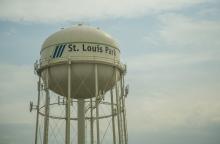“Connecting the Park”: Two Decades of Broadband in St. Louis Park, Minnesota
St. Louis Park (pop. 49,000), a suburb west of Minneapolis, Minnesota, has demonstrated commitment and creativity in bringing broadband access to the region over the last two decades. They’ve done so by connecting community anchor institutions and school district buildings, in supporting ongoing infrastructure via a dig once policy, by working with developers to pre-wire buildings with gigabit-or-better-capable connections, and by using simple, easy-to-understand contracts to lease extra dark fiber to private Internet Service Providers (ISPs) to improve connectivity options for local residents.
Conversations about improving broadband in St. Louis Park began in the 1990s, when local government officials and the St. Louis Park School District began talking about replacing the aging copper infrastructure it was leasing from the cable and telephone companies with fiber to support educational use and municipal services. At the time the city was paying about $45,000/year to stay connected and online. A 2003 projection suggested it could invest $380,000 to build its own network instead, take ownership of its infrastructure, and see a full return on investment in less than a decade.
Fiber, both the city and the school district decided, offered the best path forward for the range of tools and bandwidth that would bring success. The school district led off in connecting its structures, but by 2004 both were done, with each contributing to joint maintenance and operational costs. The city thereafter decided to keep going and expand its infrastructure wherever it made the most sense. In 2006 it advanced this agenda by adopting a dig-once policy by adding conduit — and sometimes fiber — any time a street was slated for repairs.
Municipal Wi-Fi



